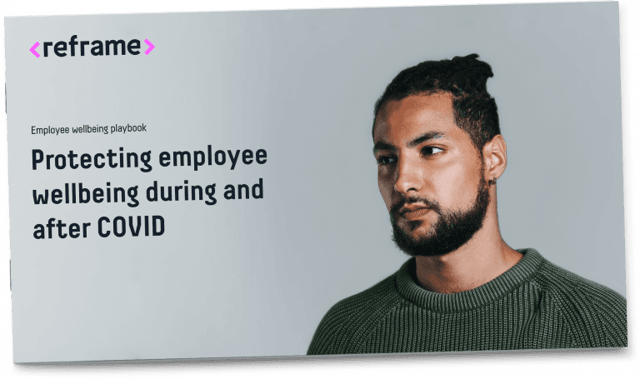An effective employee wellbeing strategy should address the five pillars of wellbeing. These are the recognised aspects of life which contribute to everyone’s sense of fulfilment:
- Physical – having the physical strength and endurance to thrive in life
- Social – feeling valued, seen and understood
- Financial – feeling secure and having the ability to plan and cope with financial pressures
- Emotional – having the mental strength, a positive attitude and sense of purpose
- Professional – being able to communicate, contribute and grow as an individual
While your organisation can play a vital role in supporting employee wellbeing, it is imperative that individuals take (and are encouraged to take) ultimate responsibility for their wellbeing.

The World Health Organisation says resilience is shaped by the availability of supportive environments which are essential for people to increase control over their health and wellbeing. Low levels of resilience can impact employees’ health, cognitive capacity, and productivity at home and in the workplace.
Worryingly, 1 in 3 employers don’t offer a holistic employee wellbeing strategy. The more pillars left unsupported, the greater the overall impact will be for organisation, from sickness absence and presenteeism, to low morale and a decline in motivation.
Fostering a supportive environment in the workplace is key to a successful employee wellbeing strategy. If the worst happens to an employee, can your organisation show its best side? Your employees want to know (and see) that you can provide the best support possible. It builds trust and loyalty among between them and our organisation.
It should also be recognised that the pillars are dependent on each other. Only by looking at the ‘whole person’ is it possible to see how wellbeing can best be supported. For example, a diagnosis may impact an individuals’ physical health however, it’s likely to have a knock-on effect on their emotional and financial pillars too. Supporting all areas of wellbeing, even those impacted the least, will help you achieve the best outcome for the individual (and the organisation).
Workplace benefits, policies and wellbeing programmes need to be built around giving employees a choice of resources for each pillar. In this way employees will be able to find their ideal level of support. By doing this the organisation can develop a wellbeing culture that supports the whole person, rather than offering series of disjointed benefits.
Our research has found that organisations who invest in wellbeing initiatives experience benefits across their workforce and the wider business:
- 90% experienced an increase in employee engagement
- 85% saw a reduction in staff burnout and sickness absence
- 94% reported better business performance overall
As remote working sets to continue and we embrace hybrid working, organisations must continue to refine their approach to best support their employees and build a culture of resilience.
.jpg?width=300&name=5-pillars-of-employee-wellbeing%20(1).jpg)
